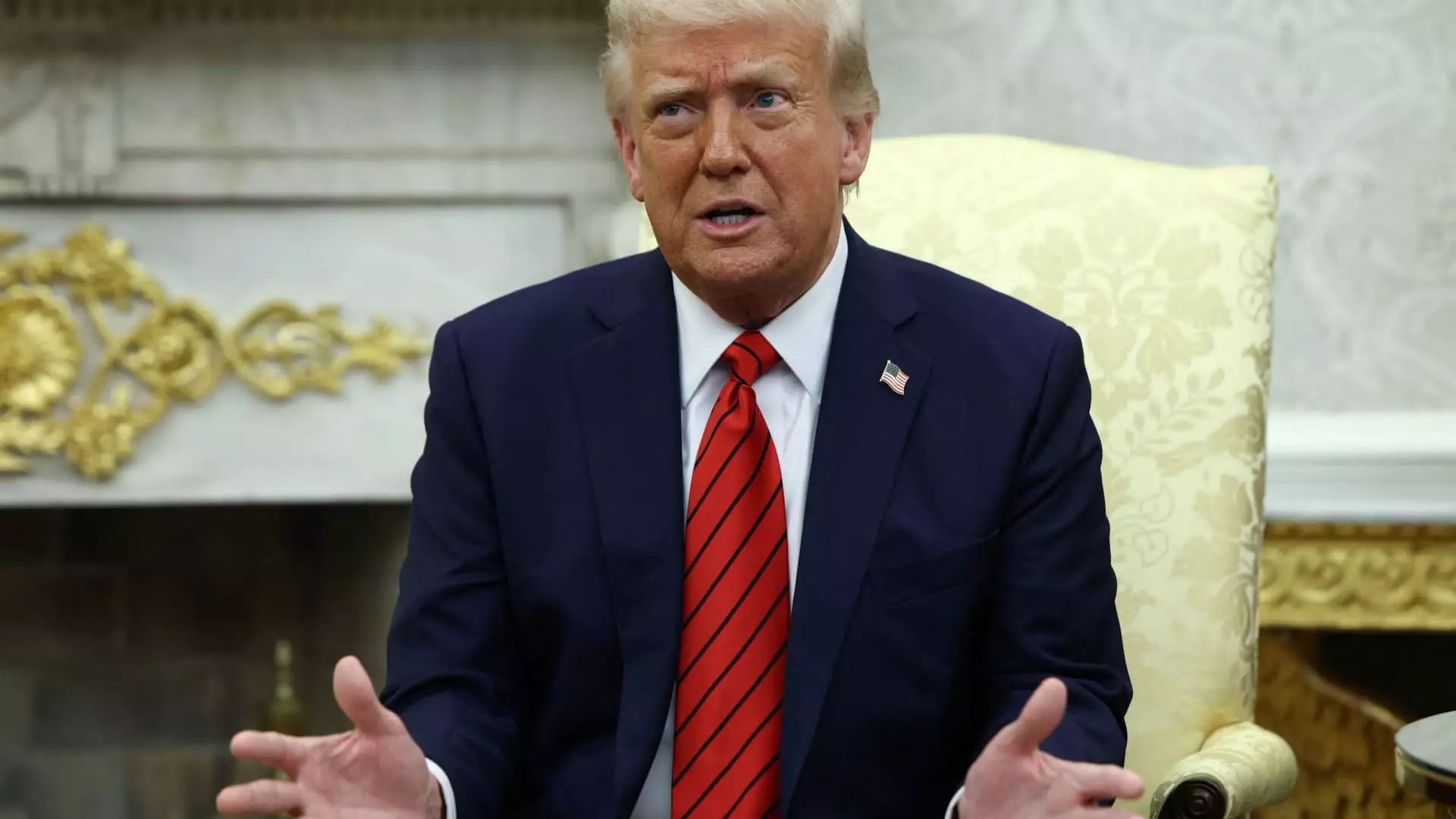5 Shocking Impacts of Trump’s Tariff Policies on Investors

In the turbulent world of finance, few events can shake the stock market as profoundly as political decisions. President Donald Trump’s April 2 announcement of imposing tariffs—dubbed “reciprocal”—did just that, creating ripples of fear among investors. This initial shock showcased a growing chasm between the political landscape and the real-time emotionality within the markets. Although some investors might feel a sense of calm returning after a few weeks of shifting headlines, the lingering anxiety about the potential impacts on individual stocks is anything but over. With tariff discussions seemingly stalled yet impactful, one must wonder whether the market’s apparent stabilization is merely a facade waiting to be shattered.
The Clarity We Do Not Have
To understand the weight of these tariffs, one cannot escape the ambiguity surrounding them. The White House claims that trade discussions are happening with several countries including Japan, yet these negotiations, shrouded in secrecy, lack clear outcomes or timetables. The market thrives on clarity, yet the Trump administration’s cryptic communications leave even seasoned investors scrambling for meaning. Scott Welch, chief investment officer at Certuity, articulates this uncertainty well: the lack of clear results from the negotiations and their implications on various sectors creates an environment ripe for anxieties to flourish. Factors such as the timeline of discussions and the precise language of agreements are vital—each word can send individual stocks soaring or plummeting.
Real Consequences for Major Players
Regular updates about big names in tech can provide a glimpse into how tariff changes directly affect market players. The recent revelation that Nvidia would take a staggering $5.5 billion charge due to export restrictions on key processors exemplifies this volatility. The chipmaker’s stock plummeted significantly, demonstrating how quickly fortunes can shift based on the political climate. Analyst Stacy Rasgon of Bernstein summarizes the sentiment aptly, indicating that the “Trump rug remains in full effect.” Where do investors turn when a policy change can evoke such stark movements in stock prices? The true madness lies in how industries intersect—the negotiations may include disparate topics from semiconductor export rules to financing natural gas projects, throwing the future of many stocks into an unpredictable haze.
The Global Investor Exodus
More worrisome is the broader trend of global investors withdrawing from U.S. assets. Lawrence McDonald, founder of the Bear Traps Report, captures the essence of this sentiment—the ongoing rollercoaster of tariff negotiations discourages global investment flows. The once-stable financial market, where international investors found refuge, now showcases signs of retreat, exposing stocks to significant downside pressure. When large international players step back, the potential for destabilization increases and compounds the fears that individual investors might have about their portfolios.
Earnings Season: A Double-Edged Sword
As the earnings season approaches, all eyes will be on corporate leaders seeking to navigate these turbulent waters. Companies that fail to give concrete projections may end up sending a chilling message about their resilience. The penchant for companies to sidestep clarity, as seen with United Airlines giving dual forecasts for 2025, does little to comfort anxious investors. It raises critical questions: How vulnerable are these companies to ongoing political shifts? Are they prepared to divulge the hidden effects of tariff-based risks? History dictates that firms expressing pessimism regarding their expectations face harsh penalties—recently observed penalties for downward revisions are significantly harsher than they have ever been, only compounding the uncertainty hanging over everything from quarterly profits to stock valuations.
A Financial Landscape Marked by Fear
As these dynamics come into play, it becomes increasingly evident that we are not only looking at a shifting landscape influenced by tariffs but also a society grappling with a deeply-rooted fear of economic volatility. Traders and investors are now in a game characterized by reactionary behavior—where punitive measures for financial forecasts are dictating actions more than any long-term strategy might. This climate creates an atmosphere of suspicion, where every financial report is scrutinized through the lens of impending tariffs or trade agreements.
The psychological and market effects of Trump’s tariffs run deep, rooted in uncertainty and fear that govern investor behavior. Navigating this complex, treacherous terrain will demand a level of astuteness unmatched in recent history. While some may argue that this chaos breeds opportunity, it’s vital to approach with caution. Therein lies the real conundrum—a volatile market driven by unpredictable politics.





